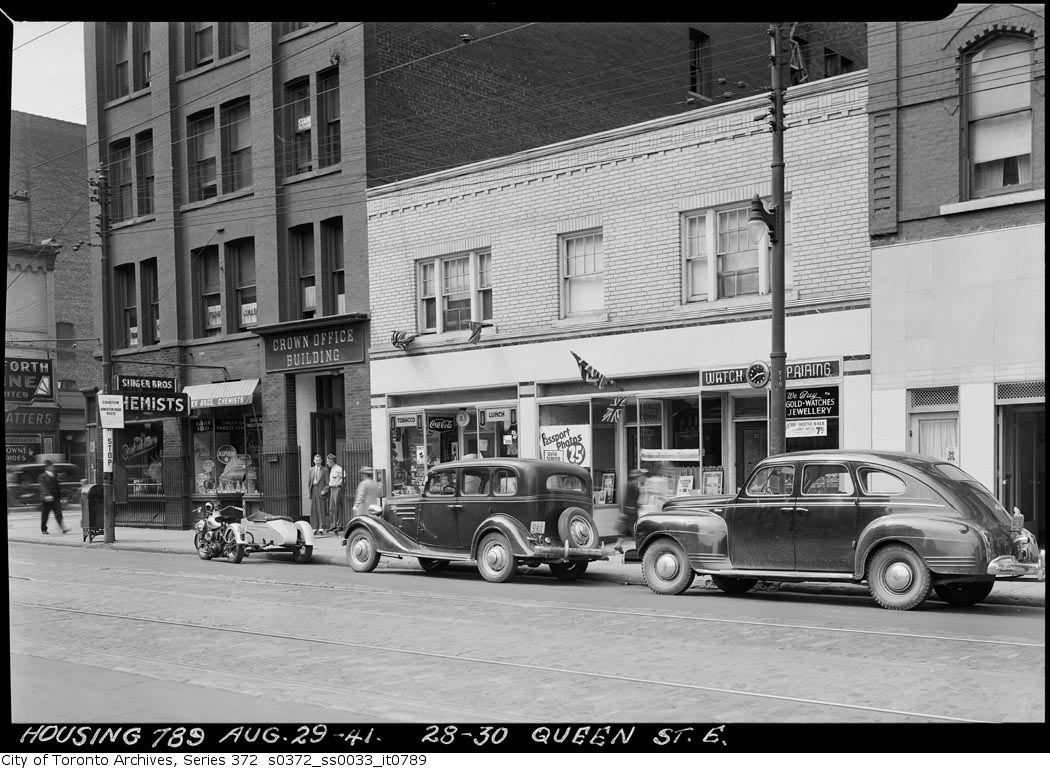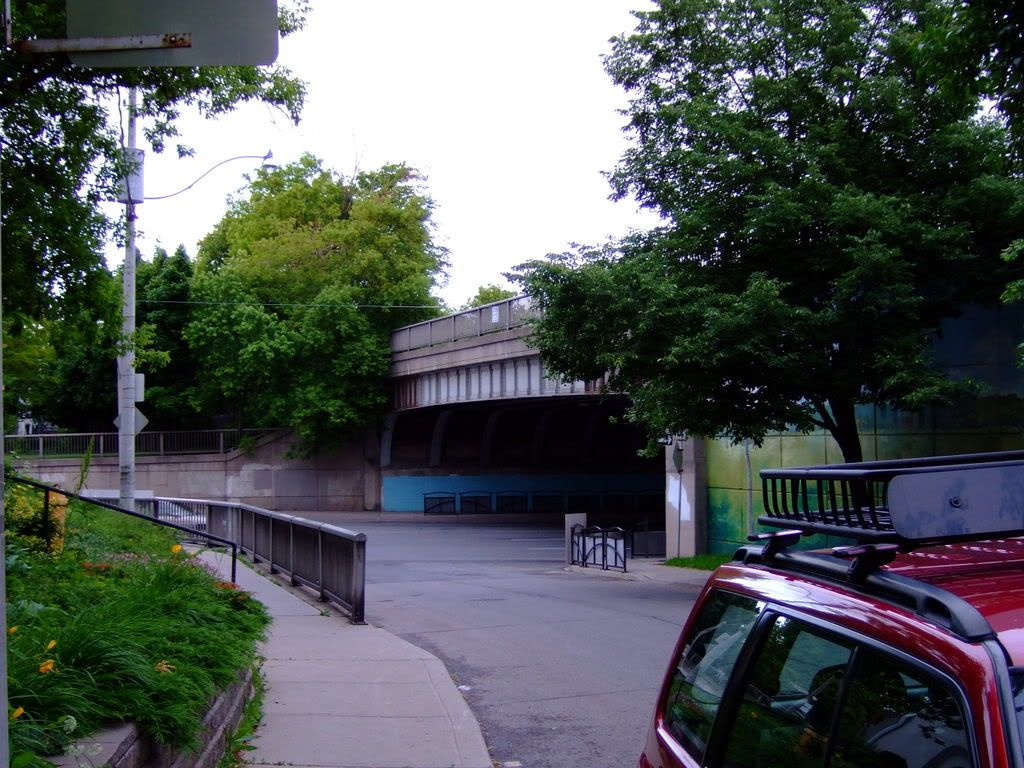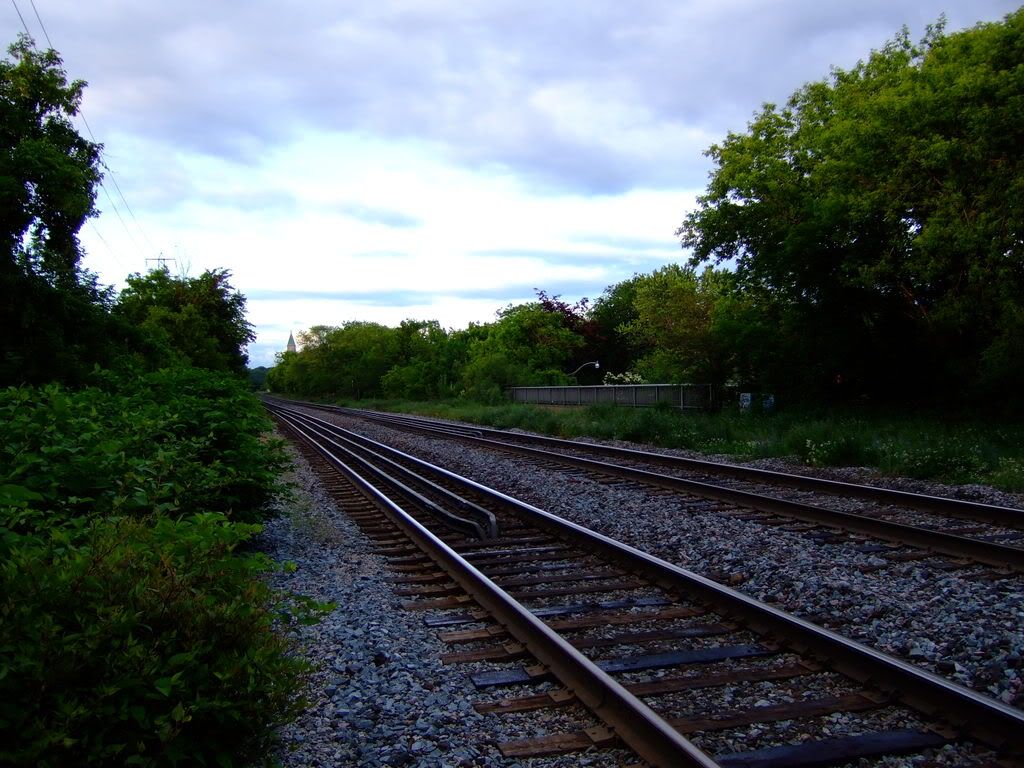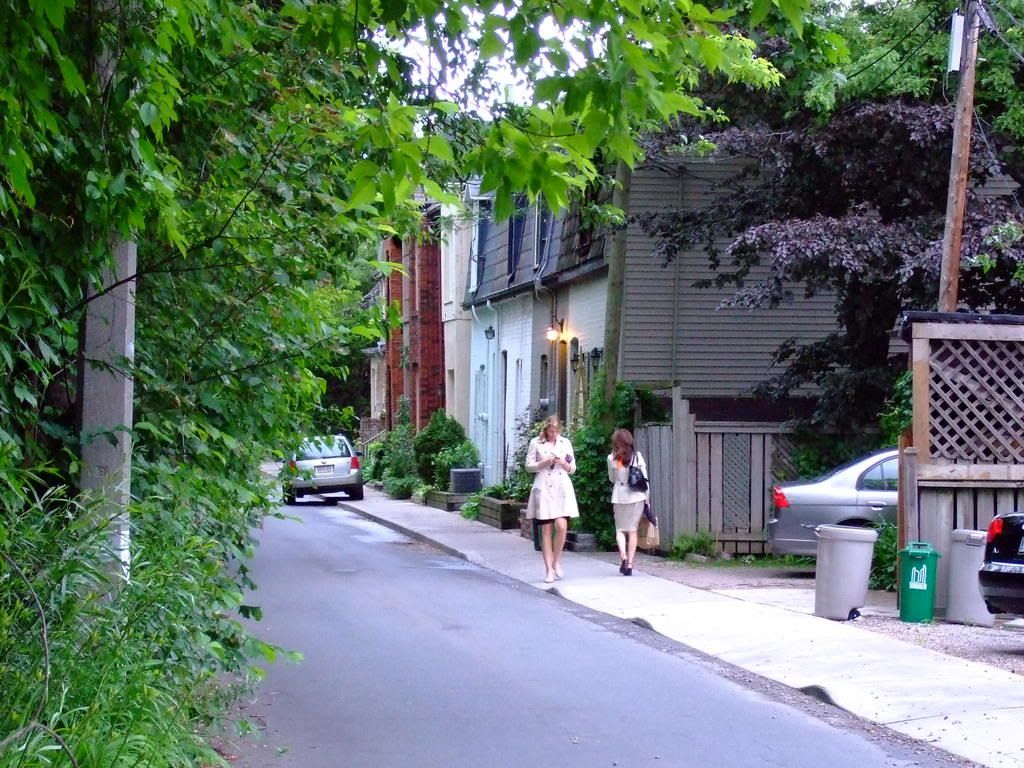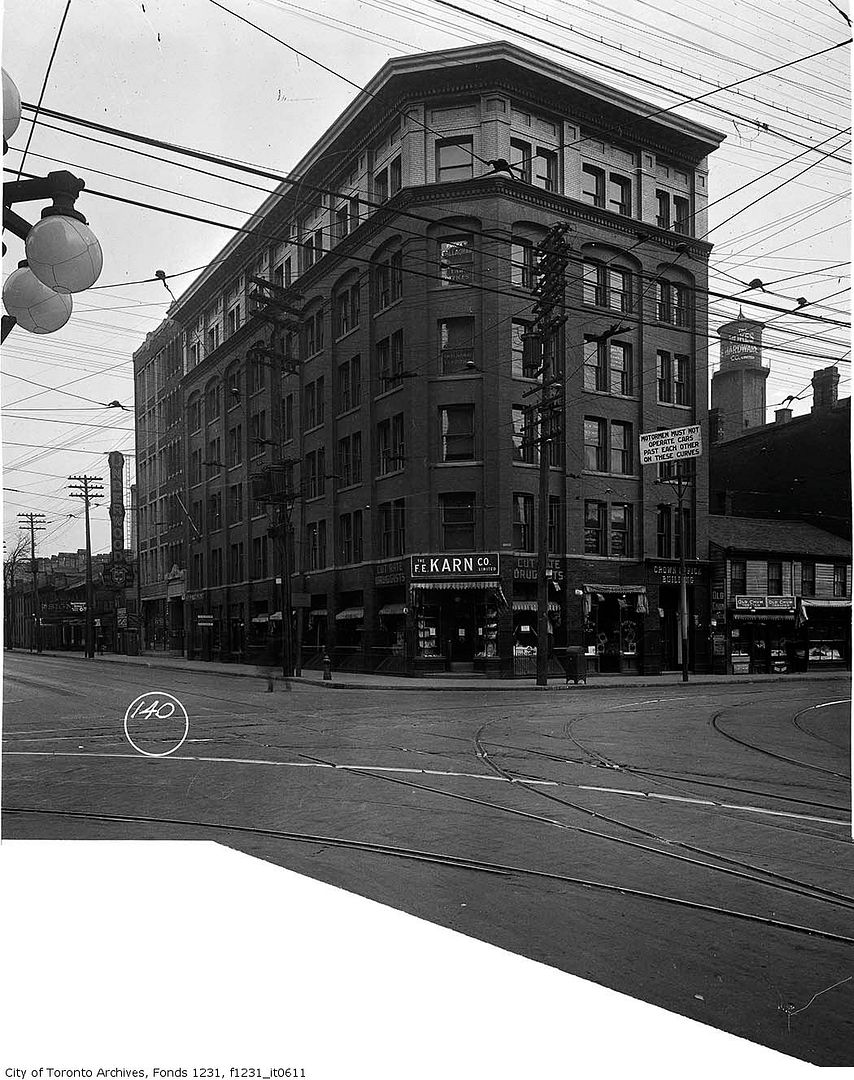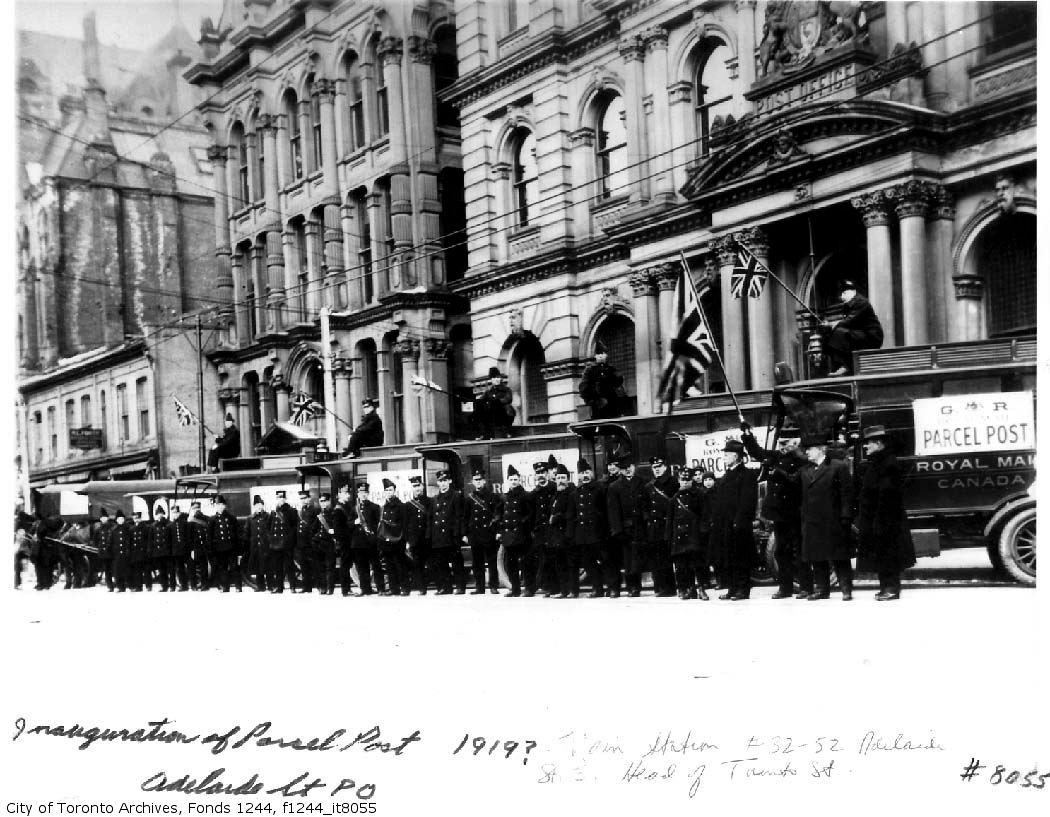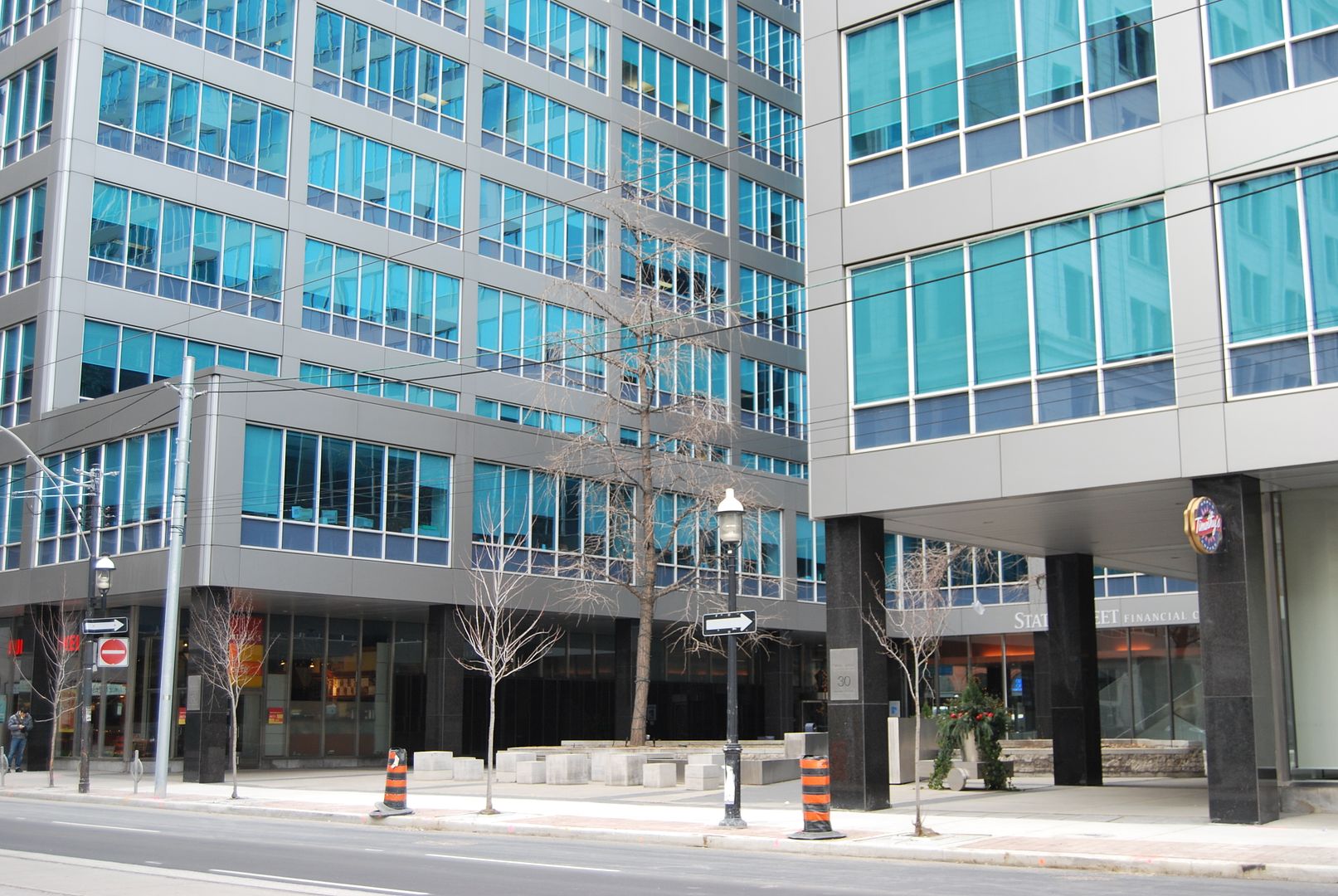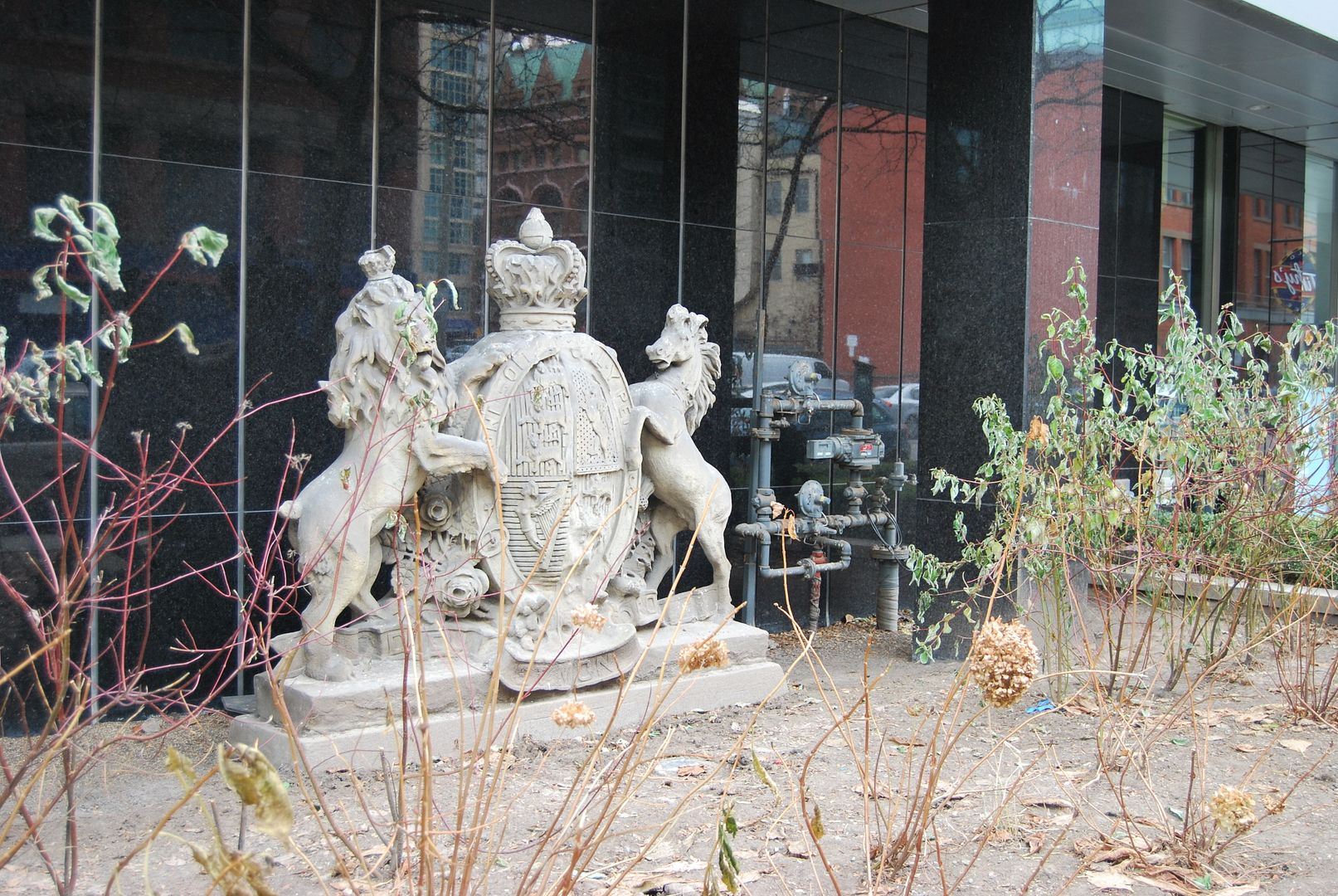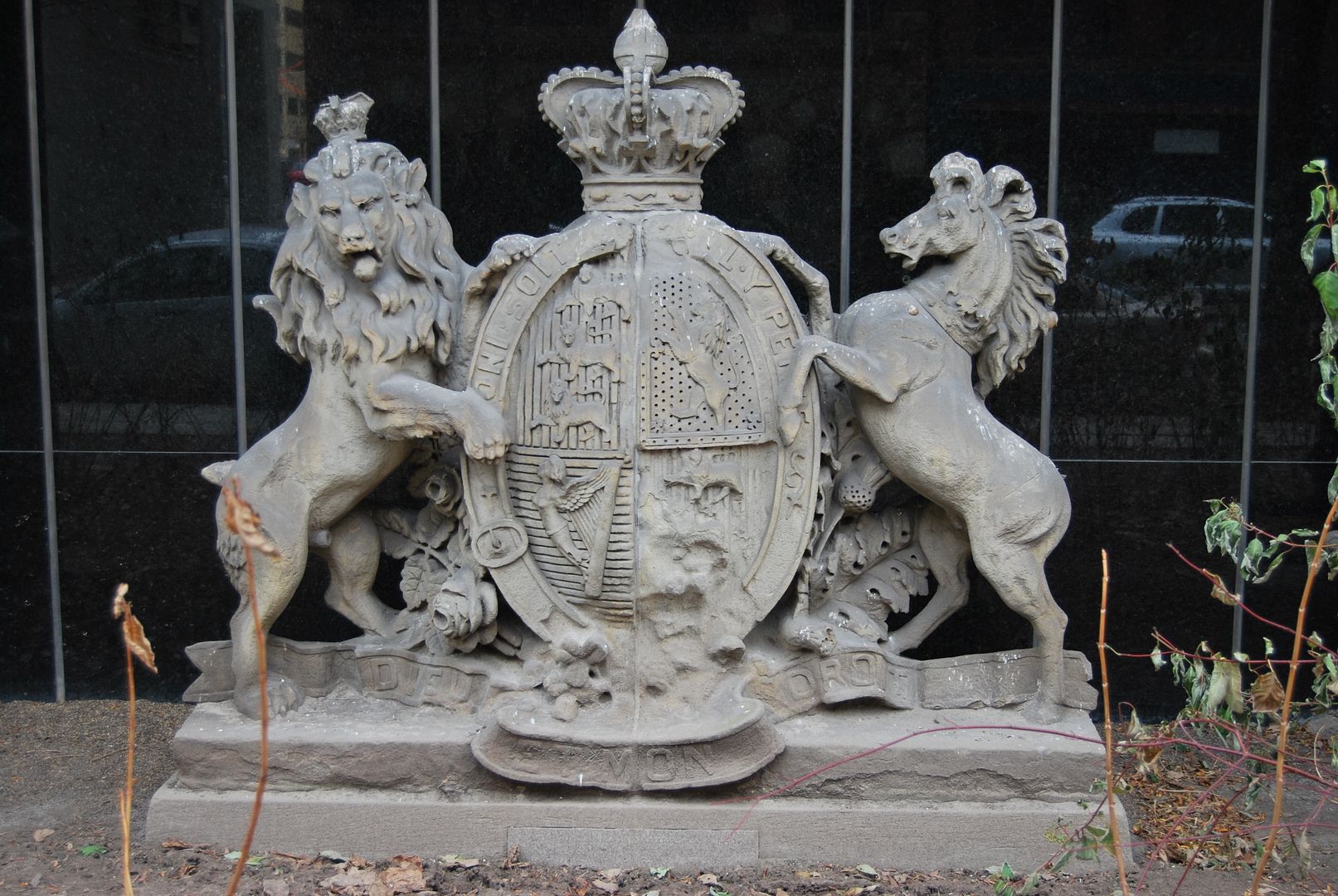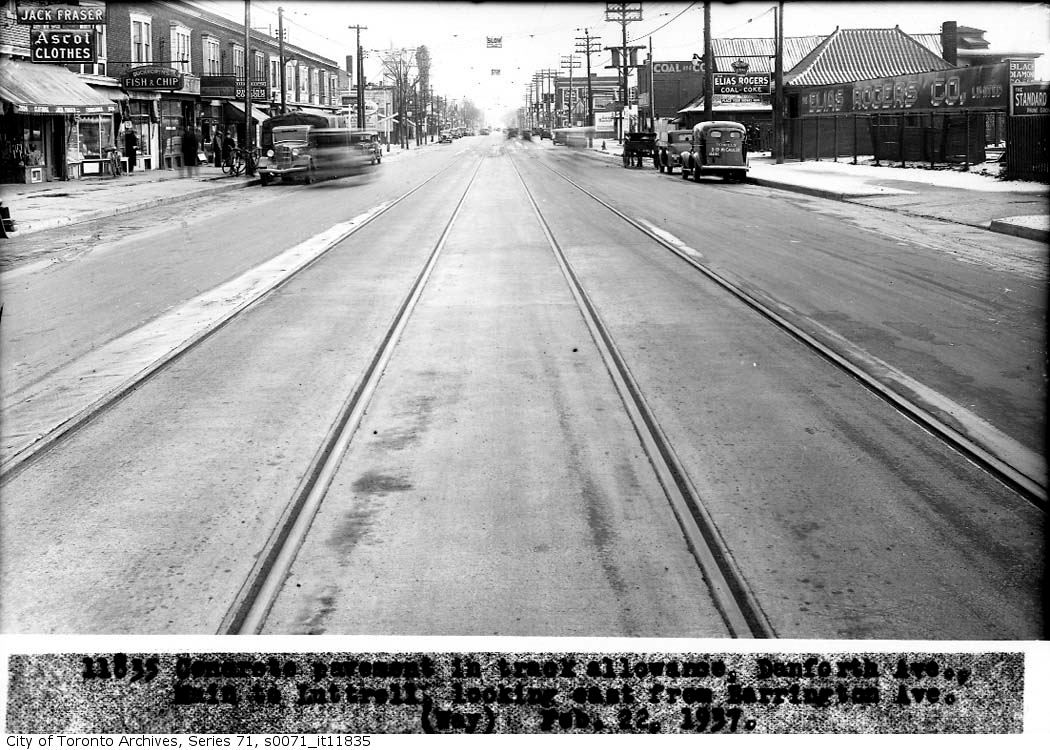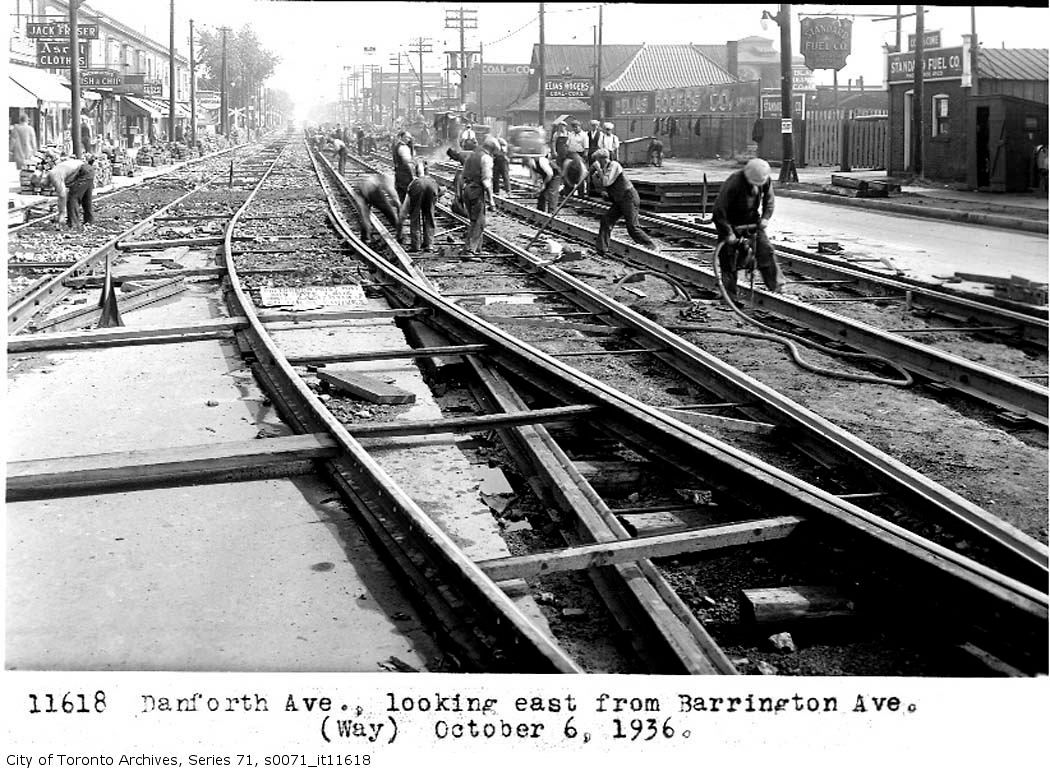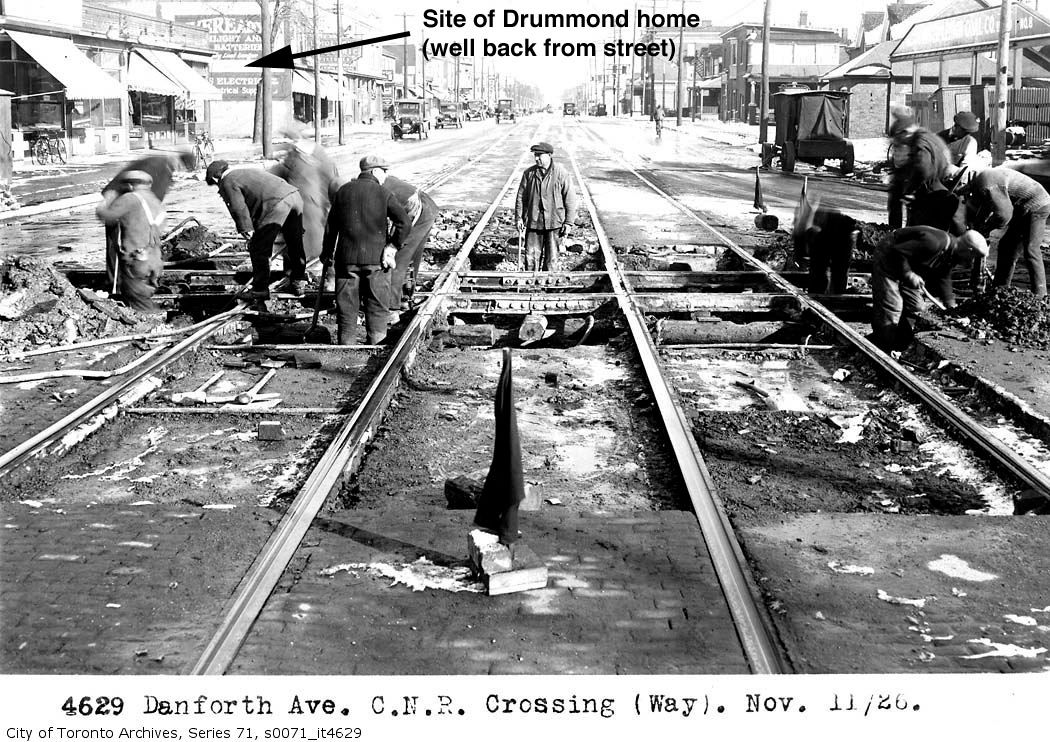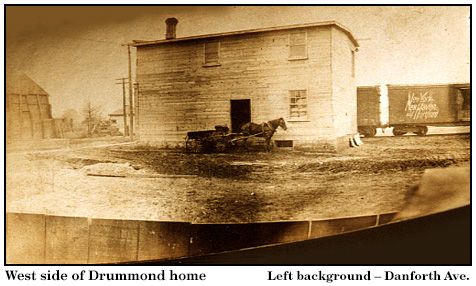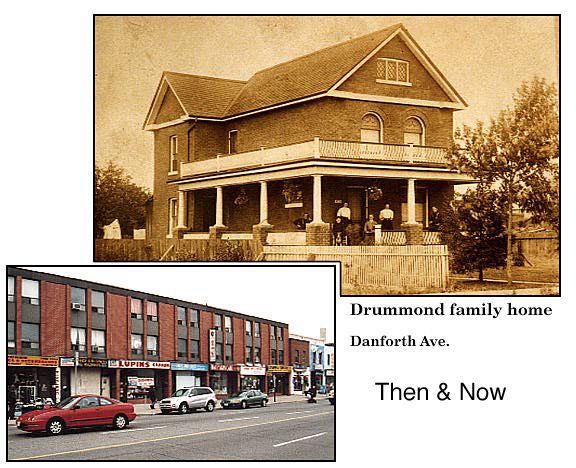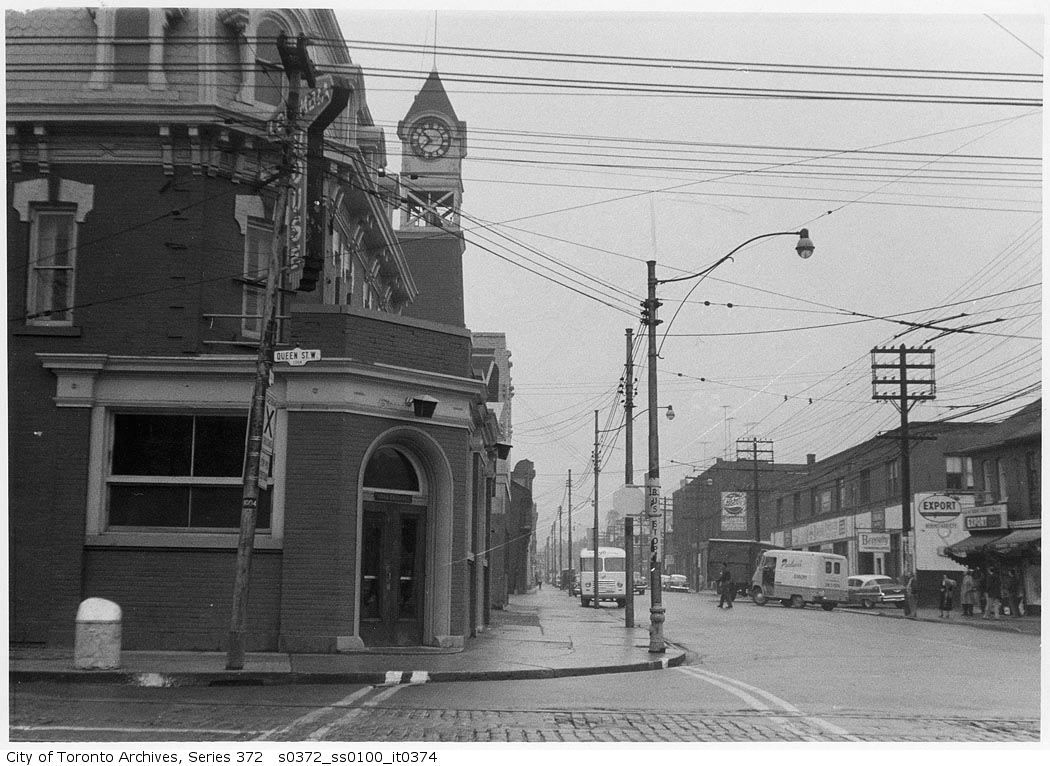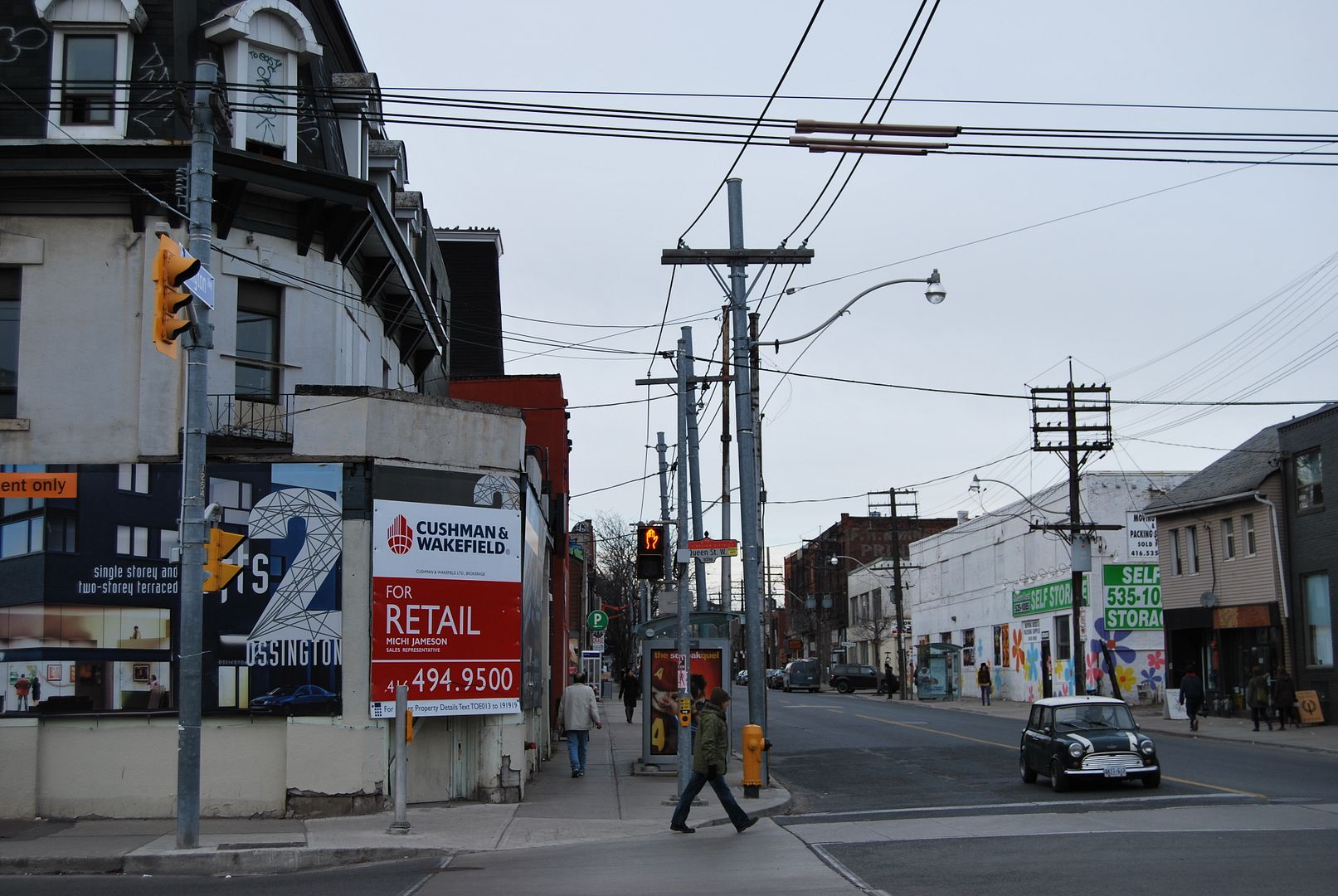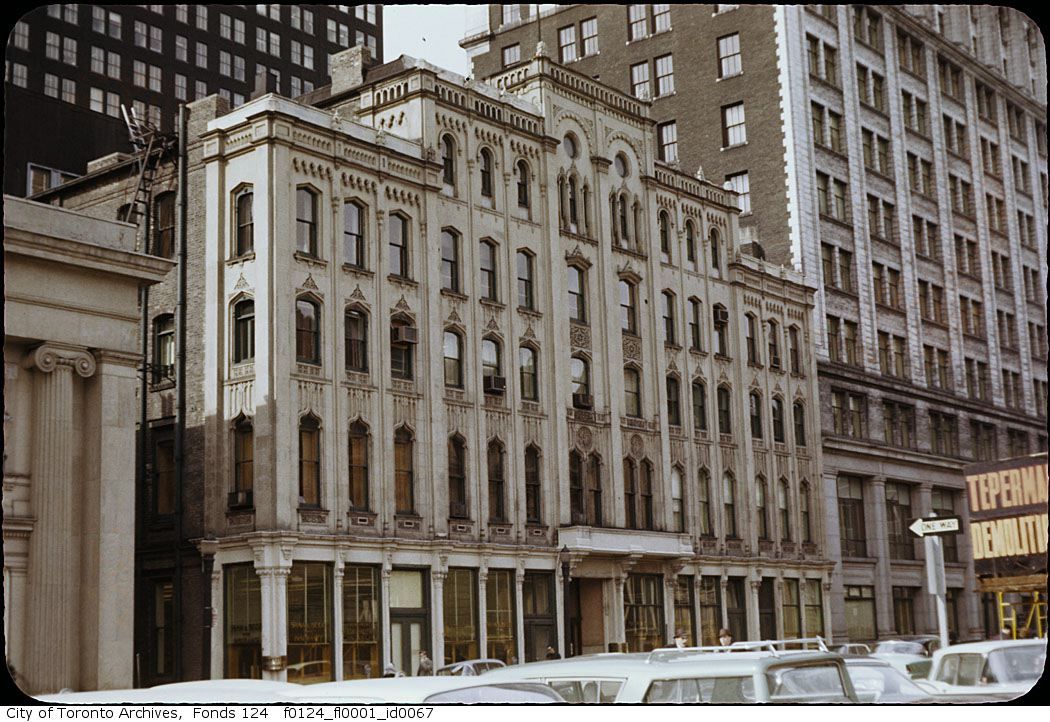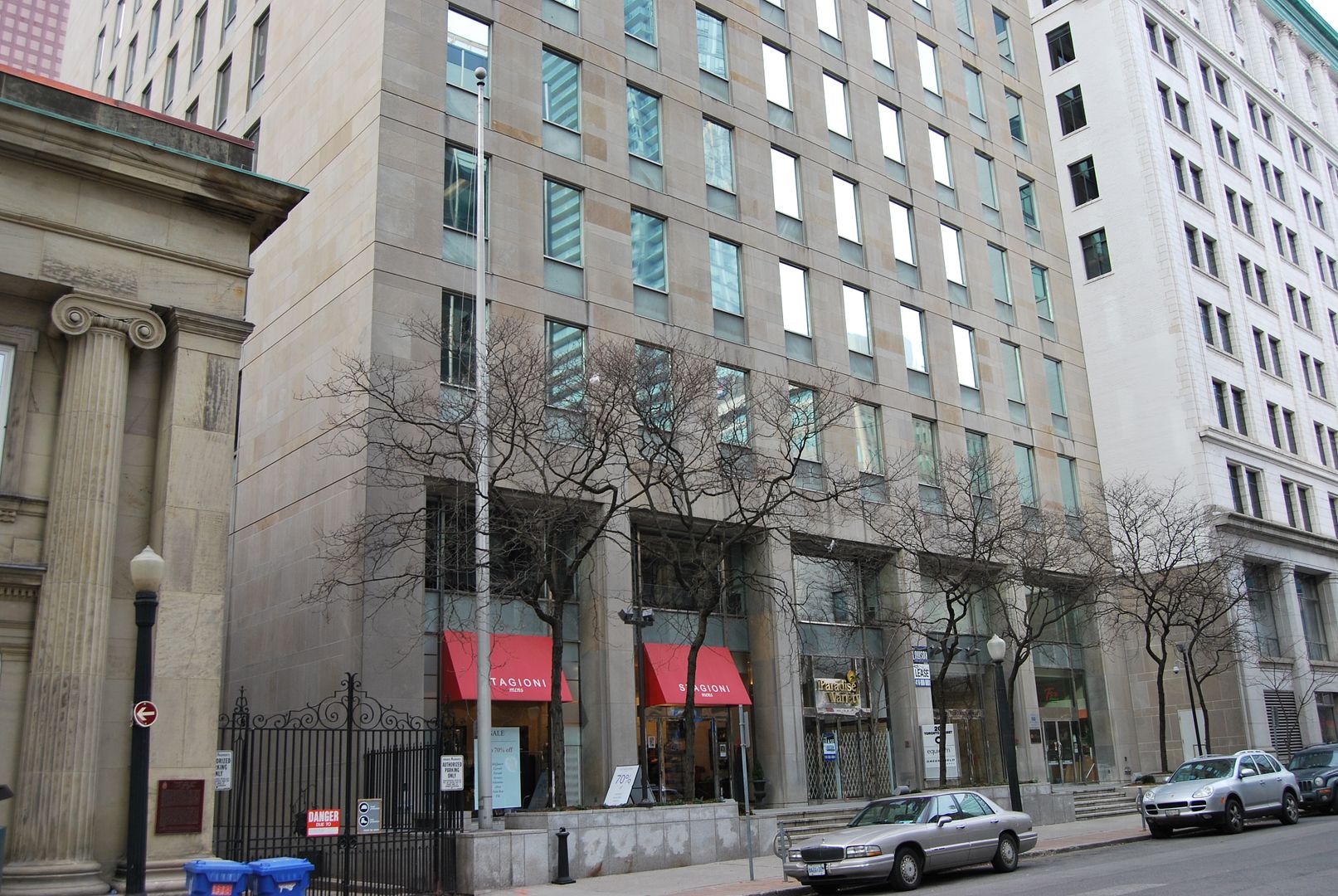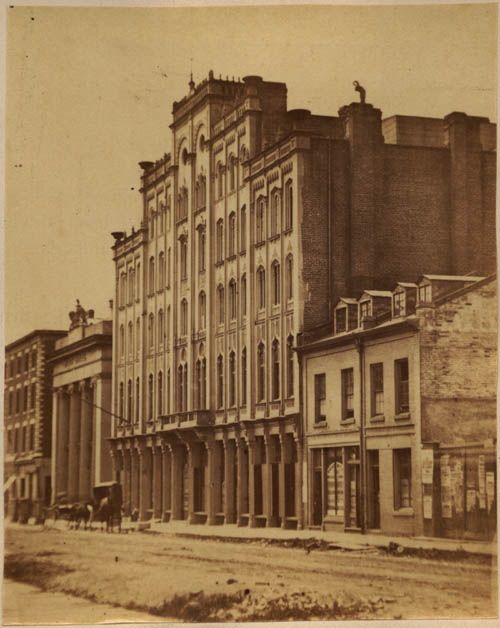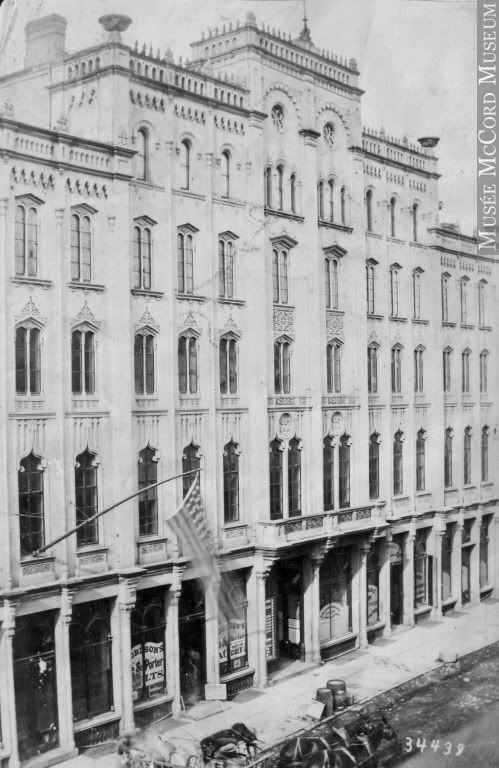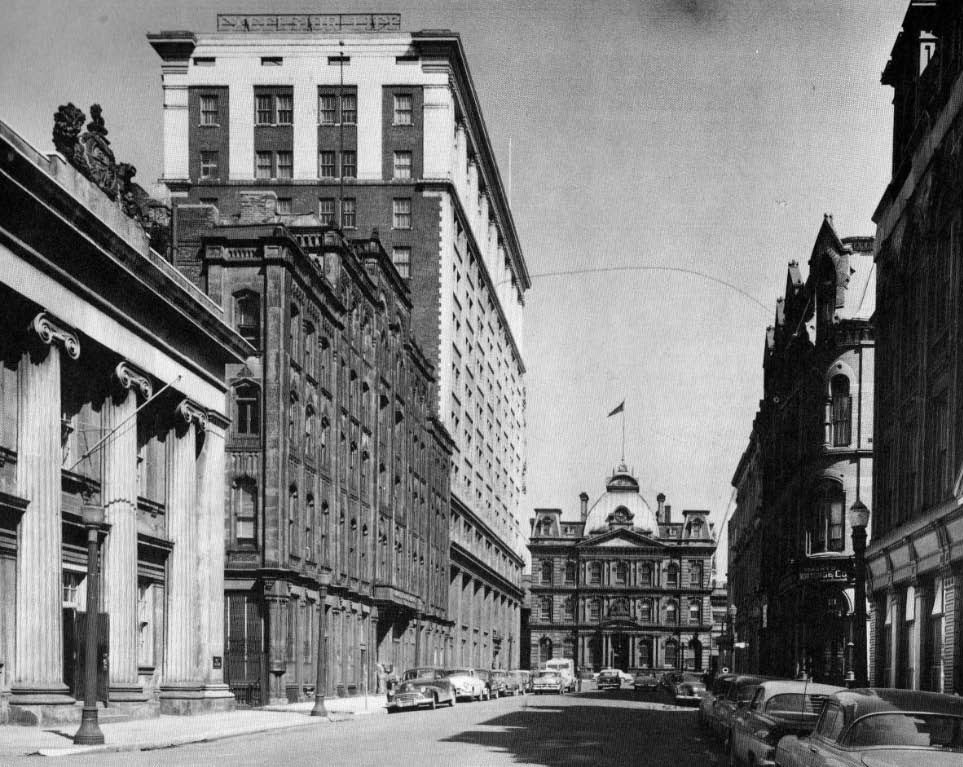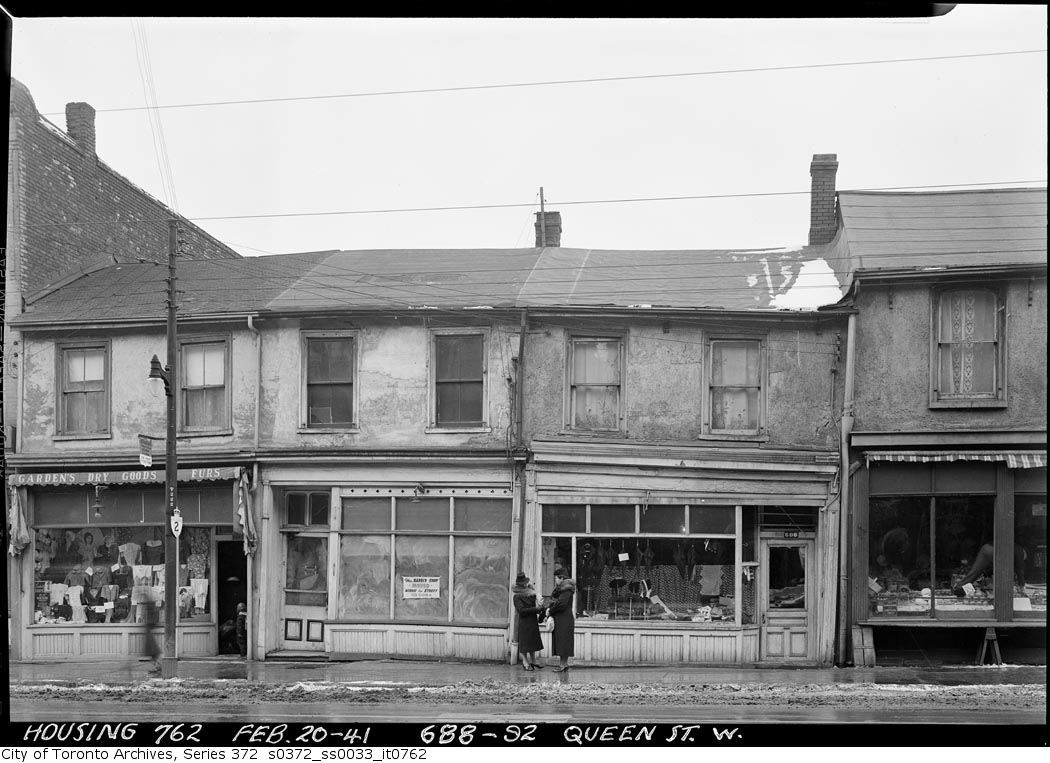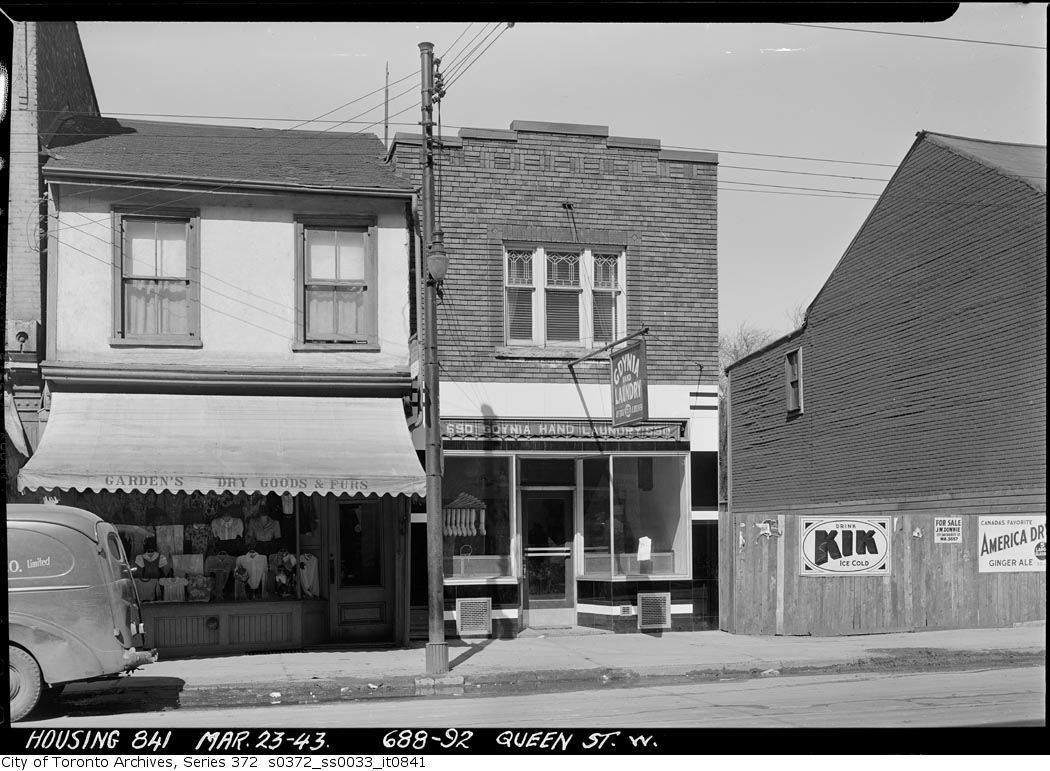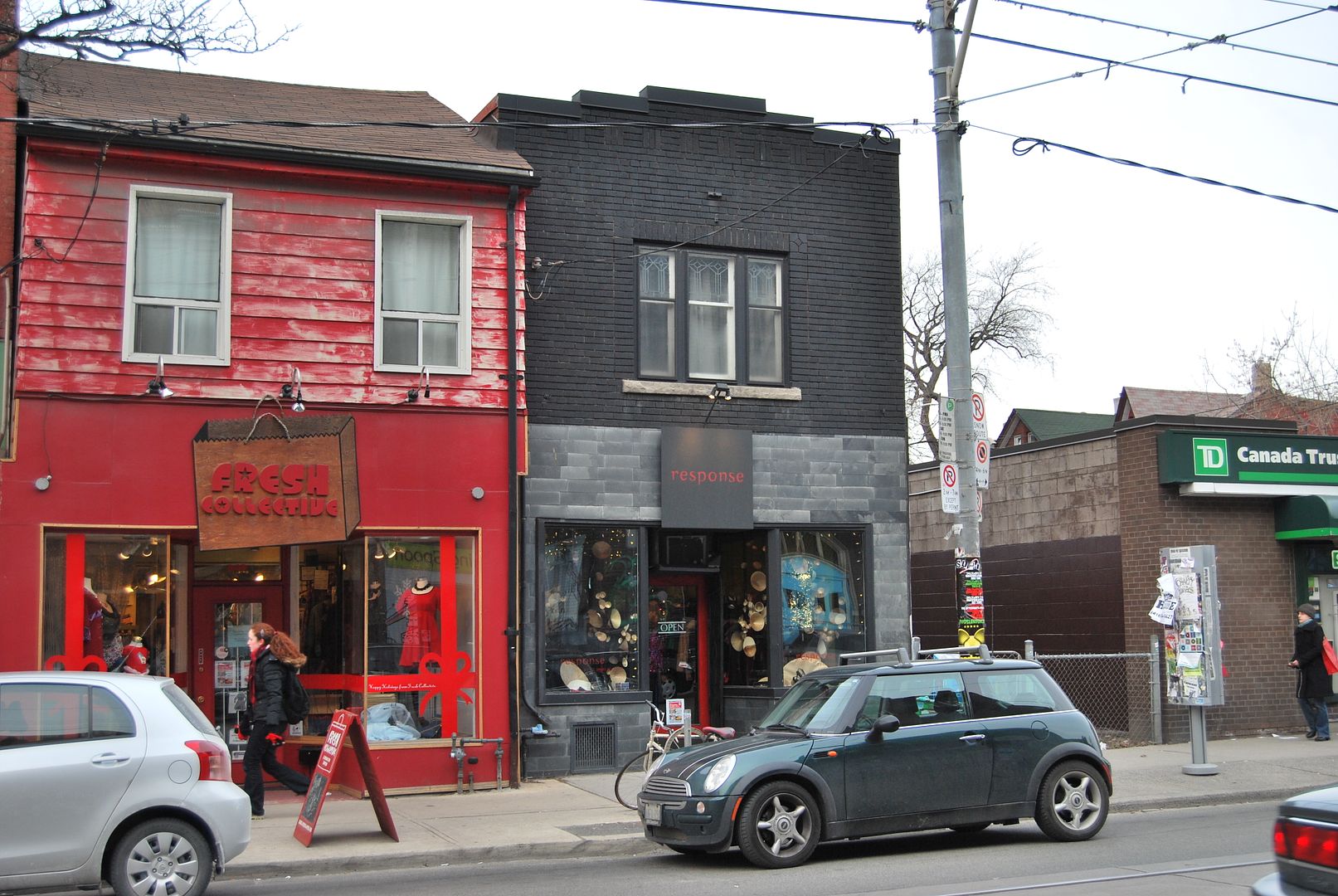East Toronto
By the 1880s, the Grand Trunk Railway needed a new main freight yard. Their yards along the Esplanade were squeezed for lack of room. The company selected farmland five and half miles to the east of Toronto in 1883. The new freight yard at York Station would serve the company's main line between Toronto and Montreal, as well as the traffic from the recently acquired Midland Railway.
The railway yard was built south of the Danforth, just below Little York and Coleman's Corners crossroads, where the Grand Trunk line to Montreal crossed Dawes Road. The road was closed and traffic diverted to a new street called Main. The yard could store 420 cars on seven miles of track and 31 engines in a roundhouse with adjacent repair shops. The York Passenger Station was built on the north side of the tracks. In 1890 and again in 1903 local people tried to rename the station "East Toronto", but the railroad refused. Soon, industries that relied on bulk transport, such as fuel and lumber, grew up next to the tracks near the station.
As the yard was built on farmland, Grand Trunk had to put up workers' houses. They were constructed on Lakeview Avenue (Gerrard Street), Swanwick Avenue, and the north side of Stephenson Avenue (named after the first Reeve). The last of these houses was demolished in 1965 when Kimberley School was rebuilt. To provide rooms for the train crews, a large YMCA was built in front of the station at Main Street and Danforth Avenue. This building provided the community with much needed space for church, social and charity meetings in its assembly hall.
The town incorporated in 1888 with a population of 750, and the council met upstairs in the Firehall. East Toronto's seal featured a locomotive showing the municipality's dependence on the railway. One strip of East Toronto, between Balsam & Beech Roads ran down to Lake Ontario at Balmy Beach to secure water rights; however, the Grand Trunk Railroad provided water for the town from local springs.
East Toronto's commercial heart was the corner of Main and Gerrard Streets. McMillim & Costain had a hardware store there for the first thirty years of the twentieth century. Other stores of that period were Widdowson's Shoes, William's grocery store and O'Donnell's dry goods just up the street. William Candler, who had started out as a carriage builder, eventually owned a Ford dealership and sold gas. Fred Taylor played early silent movies at the Ideal Theatre, and afterwards people enjoyed ice cream treats in his Palm Gardens parlour.
Several events took place in 1903: East Toronto became a town with three wards. A second event saw a section of Balmy Beach made into a popular park. Finally, the YMCA building was moved to the northeast corner of Main and Gerrard. It eventually closed in 1920 and today, the Ted Reeve Arena occupies the site, and the playing fields are known as the Grand Trunk Fields.
In 1907, people living near Lake Ontario became alarmed by railway expansion rumours. Newspapers published attempts by the railroads to run track just offshore east to Port Union. Later, more rumors claimed that both Canadian Pacific & Canadian Northern Railroad were surveying the beach and 200 yards north of Queen Street as possible track sites. The public was aroused, worried about their property values and quality of life. Petitions were signed and a delegation travelled to Ottawa. All the railways remained where they had been.
Although there were many advantages to annexation to Toronto – paved streets, more reliable water, electric light, and good sewage systems, East Toronto's feelings were mixed. The southern Beach ward was keen, while the north feared higher taxes. East Toronto finally joined Toronto on December 15, 1908, but the advantages came slowly. The area remained surrounded by fields and market gardens until as late as the 1920s, as the city crept nearer along the street railways lines on Gerrard Street, Danforth Avenue and Kingston Road.
The Grand Trunk Railway became part of the Canadian National Railways in 1923. By the 1940s, the Danforth Yard was no longer used as a freight yard, and the locomotive roundhouse was demolished. In 1940, there were six tracks north and 17 south of the mainline. By the 1980s, the northern tracks had been removed and there were 11 southern storage tracks. The York Station was demolished in October 1974, and a GO transit station now occupies the site.
Although the village had easy access to Toronto by trains or street railways, people tended to live, work and play close to their neighbourhood. The closeness of The Beach with its clean air and change of atmosphere made it 'the place' to go to for summer enjoyment for many East Torontonians.
from All Aboard Toronto, a Virtual Exhibit by the Toronto Public Library
http://ve.torontopubliclibrary.ca/allaboard/
